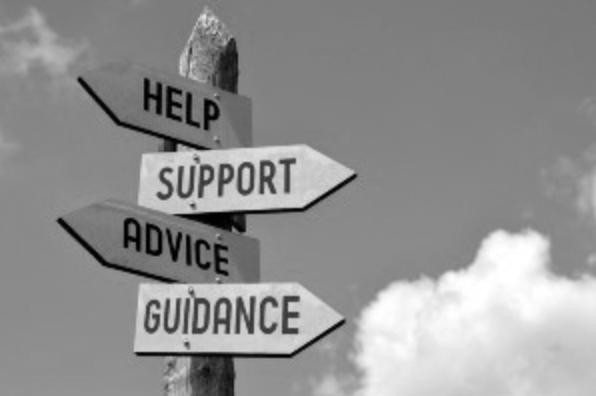(‘23)
The mental health movement has picked up pace in recent years with broadened education about mental health concerns,greater platforms, and more accepting environments for sharing experiences with one’s mental wellbeing. At Indian Hills High School, administration and staff have shown that they are willing to open up the conversation about mental health and provide resources for students in need. Despite this new appreciation, consideration, and understanding of mental health, it is debatable whether the situation is getting better or worse.
People have certainly become more comfortable talking about mental health topics in recent years, and as senior Emily Curtin comments, “I think getting help has become more normal than years before.” According to the American Psychological Association (APA), “The 2022 COVID-19 Practitioner Impact Survey found that demand for anxiety and depression treatment remained high for the third consecutive year while demand for treatment for trauma- and stressor-related disorders and substance use disorders has grown. Six in 10 practitioners reported that they no longer have openings for new patients, nearly half (46%) said they have been unable to meet the demand for treatment and nearly three-quarters (72%) have longer waitlists than before the pandemic. On average, psychologists reported being contacted by more than 15 potential new patients seeking care a month.” Even with telehealth services expanding access to patients, many healthcare providers still feel overwhelmed with the higher demand of their services.
However, there is still arguably a stigma surrounding mental health topics, especially for specific cultures and genders. There is public stigma, which involves the harmful attitudes that others have around mental illness. For persons seeking treatment, there is the phenomenon of self-stigma, which includes internalized shame people have about their own mental conditions. Some face institutional stigma, where governments and/or private organizations intentionally or unintentionally limit opportunities for people with mental health issues to get help, such as providing fewer mental health services.
There are often concerns about talking about mental health in a school or professional setting due to fear of potential effects or judgment. In the past few years, this reliance on schools or places of work to assist in the fight against mental health has taken an upward turn. In our very own community, IH Guidance and Administration assist students in their success throughout diversity or hardship.
In terms of cultural stigma, Children’s Health of Orange County (CHOC) explains that “Black families may be understandably reluctant to seek mental health therapy due to the longstanding history of discrimination, racism and mistreatment the Black community has experienced at the hands of providers in the U.S. Instead, they tend to take an active approach in handling adversities independently and directly.” CHOC also mentions that Latin Americans are also less likely to trust mental health providers, when compared to white families, and rely on social support from family and their community instead. Often for Asian Americans and Middle Eastern Americans, there is a cultural belief that mental health treatment will bring shame to their family, causing individuals to internalize symptoms rather than seek help. While all of these examples are broad and certainly do not apply to everyone, these are some of the various reasons why ethnically diverse communities are sometimes unable to receive the mental health support they need.
When asked by Drumbeats staff if there still is a stigma surrounding mental health, Mr. Mungiello, an art teacher in the RIH district, shares,
“Yeah I think so… maybe not so much for your generation, but with mine, I still feel like you mention you go to therapy and everyone gets clammed up and weird about it and thinks there must be something really wrong with you. Or if you try to openly talk about more sensitive things I feel like there are some weird feelings that surface from that…. I feel like the stigma is less restricted than it was before. When I was in high school you didn’t talk about it or you were just told to suck it up and deal with it, which isn’t great either. At the same time, you could also maybe baby… or be a little too easy… it’s tricky… It’s just different. Cause I can talk about it and everyone has terms they use to talk about it… like on Instagram you see it’s like all over the place so I don’t think it’s as stigmatized, but at the same time when you really want to dig into it for real, people don’t want to do that because it’s painful.”
Many people can agree that there is still a stigma around mental health; however, it has evolved. Discussion of mental health may not be as taboo as it used to be, but there are still fears of judgment, consequences, pain, attention, and the prevention of individuals seeking mental health support. Mr. Mungiello maintains that the thing preventing society from further progressing in terms of mental health is fear: “At the corner of it all is probably fear…. Of knowing when things are wrong because that also means you have to do something about it and you have to fix it … fear that if it gets out of hand or gets out and ‘what’s the consequences of that’ and ‘am I gonna lose my job’ or ‘am I gonna lose this’… all these things are kinda tied to fear—fear of consequences, fear of changing things— all of that. And that ties in directly to money and politics too.” People are hyper-self-conscious and do not want to feel vulnerable or take outlandish risks even if it may help in the long term. The fear of pain is what stops people from getting started.
Alexandra Mazur, a senior at Indian Hills High School, shares that a common reservation when it comes to mental health is “probably judgment most of all. Or a fear that ‘oh, I should be able to deal with it. I should be able to handle this. I’m fine.’ ”.
Despite people talking about mental health more allowing its interplay in our American culture, the mental health crisis seems to be getting worse with higher demands for services and more statistics reporting mental illnesses. Whether this is due to the age of the internet, the change of the stigma, or external factors such as the pandemic, it is clear that mental wellbeing is something society needs to take an active role in addressing to improve. We need to chip away at many of the social stigmas by opening up the conversation for more diverse experiences and validating hardships, while making services more accessible and affordable to the public. Individually, you can help yourself and others by prioritizing your own well-being. Mr. Mungiello explains, “To be able to help people you have to help yourself first…. So for me personally, I’m trying to work on myself so I can be more comfortable talking about my [experiences]. Cause I think that is what we need to hear sometimes; just to know you’re not alone. It’s hard, but the more honest you can be, it might get you in trouble, but I think it also helps some people so it’s worth it.”
Feeling alone is, unfortunately, a hallmark in the shared experiences of those facing mental health crises. However, it is important to understand and emphasize the solidarity many feel with those facing concerns. Being hesitant, nervous, or afraid to seek treatment or openly discuss mental health with friends and family is normal. However, it is your own exposure that will bridge the gap between stigma and solution. The situation regarding mental health in the US is not a one-day solution; however, it is a one-day-at-a-time fight for many. Schools are harboring safe spaces for discussion and treatment, if you are struggling with mental health please contact IH Guidance, as they are always willing to help.






